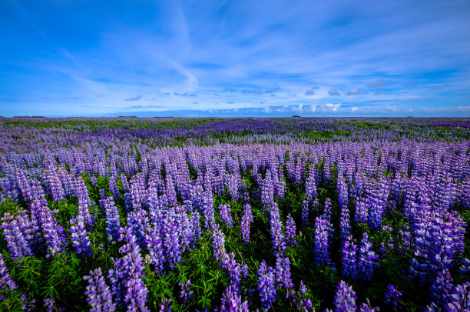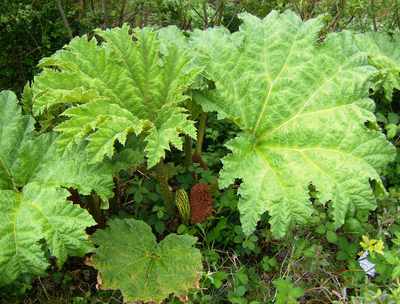They are more permanent than annuals and biennials but less permanent than shrubs. They reach maturity quickly and so can give gardens a well-furnished appearance long before trees and shrubs reach a comparable size. They can be used to fill an entire border, but such a bed has very little interest in the winter unless the plants are chosen with extreme care. One currently popular planting scheme is to make a permanent framework of shrubs filled in with a semi-permanent planting of hardy herbaceous perennials and with bulbs, annuals and biennials added as fillers to keep the display going for longer.
Herbaceous perennials are normally planted either in the autumn or in the early spring, although there are one or two exceptions. Ideally, autumn is the best time to plant, if you do so early enough. This enables the plants to root into the fresh, warm soil before winter comes so that they will be in a good condition in the spring, ready to grow away as soon as the days lengthen and the air warms up. Plants that are transplanted in the spring have to start to grow away at once, so that if the weather is exceptionally cold or exceptionally dry their initial growth can be checked quite considerably. However there are one or two plants which seem to make very little growth after being transplanted in the autumn, with the result that they often die during the first winter and for these spring planting is obviously better. The most well known of these is that large scabious, Scabiosa caucasica, one of the best herbaceous plants to grow for cutting.
Most herbaceous plants benefit from lifting and replanting every three or four years, otherwise they get very large, and this can provide a welcome opportunity to re-model the planting, correct mistakes, introduce new varieties and generally indulge in second thoughts. There are a number of plants, though, that really loathe any root disturbance, either because they have long tap roots, which may cause the death of the plant if they are damaged, or for less recognisable reasons. There seem no obvious reasons why hellebores should dislike being moved, but they certainly do and may sulk for a year or so after they are transplanted. The same thing happens with peonies, but this may be because they have such a vast amount of tuberous roots underground that it is almost impossible to move a good-sized plant without seriously damaging the root system. These, and others like them, are best left undisturbed for a good many years. Plants with long tap roots, like oriental poppies, should only be moved as young plants and once planted should be left. In any case it is always best to start off with small plants, whether they be seedlings or divisions from other plants. A few others, such as lupins and delphiniums, age rather quickly and are best renewed quite frequently.
When you do come to lift and divide the plants, you may find that some get their roots so interlocked that it is by no means easy to divide them; the answer is to get two garden forks and insert them back to back in the clump and then lever them apart. And if that gets too difficult you will have to resort to a knife and cut the separate crowns apart. The centre of the clump will probably be impoverished, due to the fact that it will have exhausted the soil where it was originally planted; also the centre tends to get overgrown by the stronger outside parts which are in fresh soil; so when the clumps are split up the centre is usually thrown away and the plantlets on the outside are preserved.
Most herbaceous perennials are easy to manage. Some of the taller kinds, or those with slender stems, may require support and there are numerous ways to do this. One is to push twiggy branches into the soil in spring so that stems grow up through them; another is to use metal hoops or half circles in much the same way. Canes or stakes with encircling ties of soft string are another possibility. I have seen whole beds covered with a net about two feet above the ground, but this means that all the plants need to be tall enough to grow through it. Plants which flop over the edge of a lawn can be a problem since it makes mowing very difficult, and can even kill off the grass. Two things you can do here - cut the lawn back to beyond the plant edges or get something like miniature hurdles to hold them off the grass. These can look quite picturesque.
Healthy herbaceous plants suffer very little from pests and diseases and only occasionally require spraying with insecticides or fungicides. They may require watering in dry weather and will grow more vigorously if fed in spring and possibly again in early summer with a well-balanced compound fertilizer containing nitrogen, phosphate and potash in more or less equal proportions. They should be kept clear of weeds, and in autumn the stems of deciduous kinds should be cut off a little above ground-level. Faded flowers or seed heads can be removed much earlier, but this depends on whether or not you regard them as unsightly, or need to take them for home-produced seed. Weeds should be removed regularly by hand weeding or hoeing, and in autumn the soil can be lightly forked to remove any remaining weeds and loosen the surface. But do remember that there may be feeding roots quite close to the surface, and the last thing you want to do is damage those.
You can find herbaceous plants to fit any soil or situation, but the majority will be perfectly happy in a soil that is reasonably deep and not inclined to water-logging. Most like full sunlight, although it is possible to grow bog plants and shade-lovers where conditions allow. And they come in all sorts of sizes - from the New Zealand Burr, acaena microphylla, which grows to all of 2 inches high (but will spread to form a patch 2 feet or more across), to the Foxtail Lily, eremurus robustus, which has just about the same spread but will reach 10 feet or more. Leaf shapes vary quite a bit, too, from the spiky irises to the round-leaved bergenia, and not forgetting gunnera tinctoria, which has leaves like giant rhubarb. Mixing up the different heights and shapes can give you a very interesting border.
Happy Gardening.
Bill Hutchings







